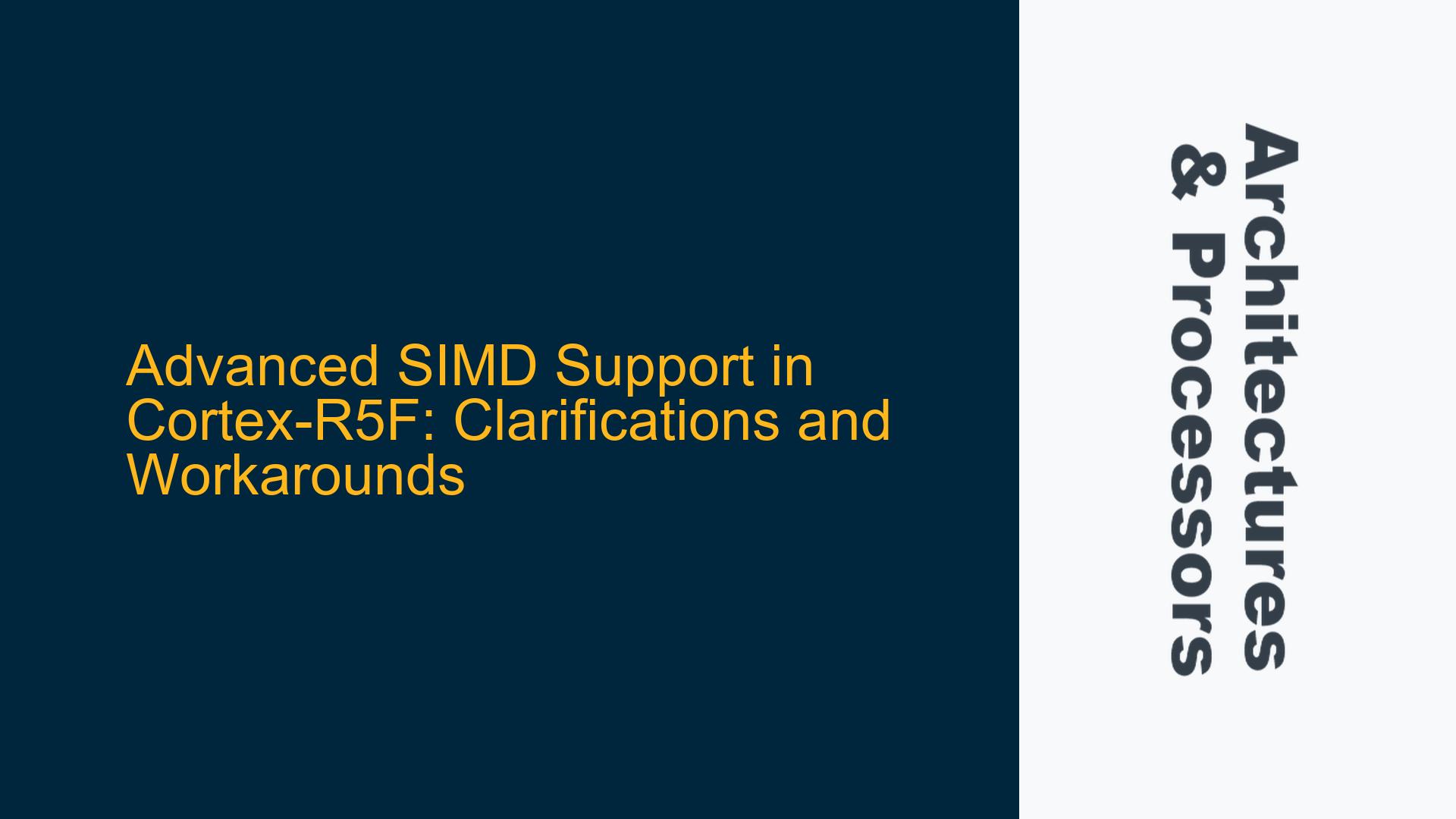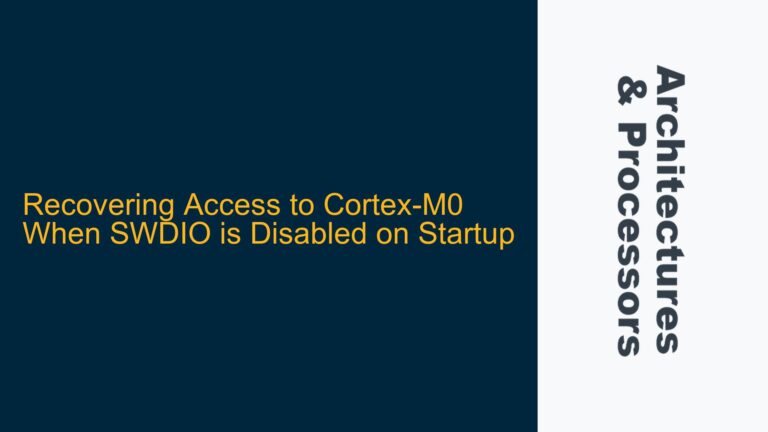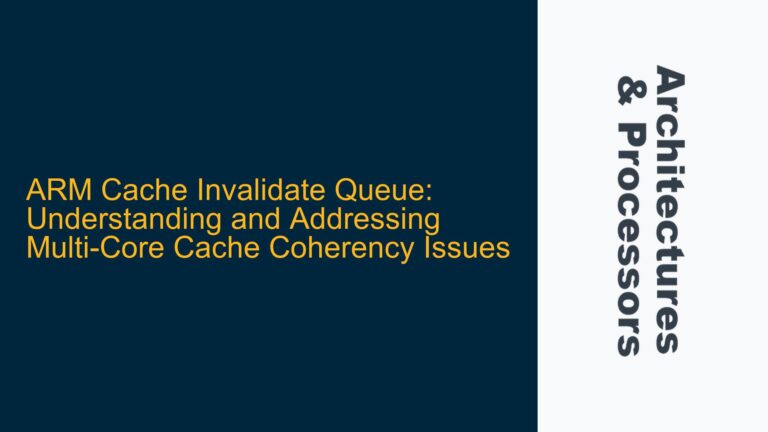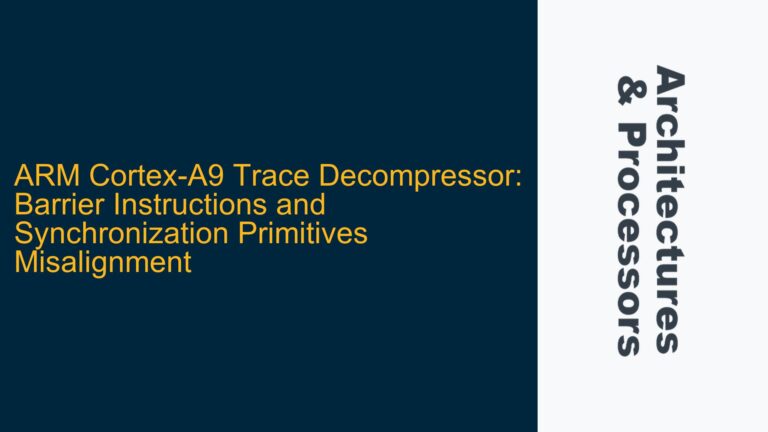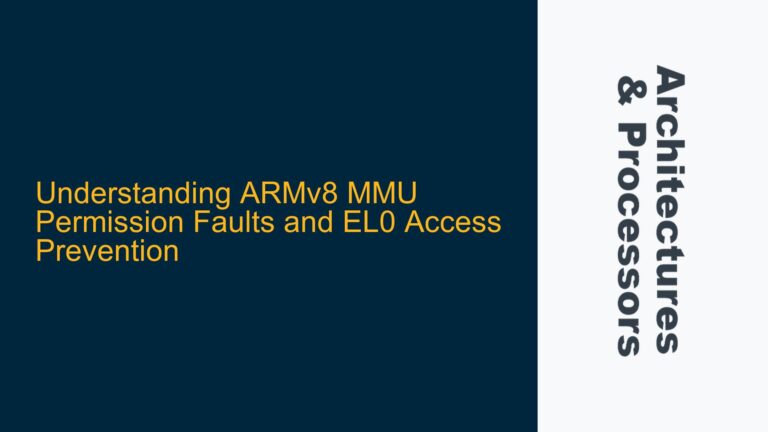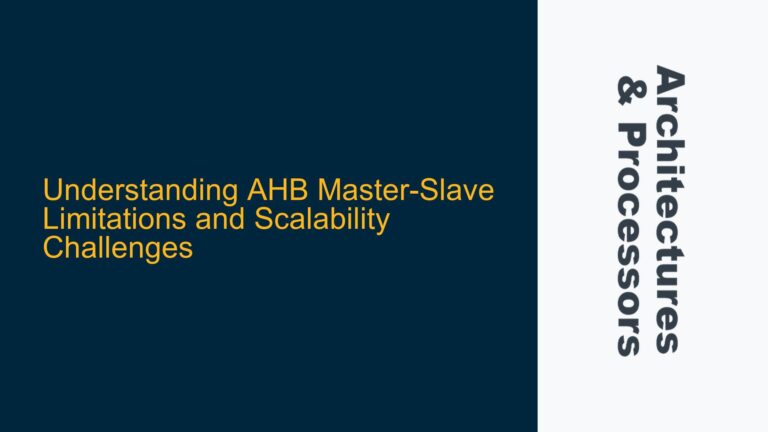Cortex-R5F Advanced SIMD Support Discrepancy in ARMv7-R Architecture
The Cortex-R5F processor, part of the ARMv7-R architecture profile, has been a topic of confusion regarding its support for Advanced SIMD (Single Instruction Multiple Data) instructions. The ARM Cortex-R5F Technical Reference Manual (TRM) revision r1p2 initially states that the Cortex-R5 processor implements the ARMv7-R architecture profile, which includes the Advanced SIMD architecture extension for integer and floating-point vector operations. However, the integration register values CPACR.ASEDIS = 1 and CPACR.D32DIS = 1 indicate that Advanced SIMD is not available on the Cortex-R5F. This discrepancy has led to significant confusion among developers and engineers working with the Cortex-R5F.
The Advanced SIMD extension, also known as NEON, is a set of instructions designed to accelerate multimedia and signal processing applications by performing parallel operations on multiple data elements. The absence of Advanced SIMD support in the Cortex-R5F has implications for developers who rely on these instructions for performance-critical applications. The confusion is further compounded by the presence of SIMD instructions in the Cortex-R5F, which are distinct from Advanced SIMD instructions. The ID_ISAR3.SIMD_instructions register value of 0x3 indicates that a set of SIMD instructions, such as PKHBT, QADD16, and others, are enabled. These instructions are part of the standard ARMv7-R SIMD support but do not include the Advanced SIMD (NEON) instructions.
The root of this discrepancy lies in an error in the ARM Cortex-R5F TRM. The manual incorrectly states that the Cortex-R5F supports Advanced SIMD, while the hardware implementation and register values confirm that it does not. This error has been acknowledged by ARM, and it is important for developers to be aware of this distinction to avoid potential pitfalls in their software designs.
Memory Barrier Omission and Cache Invalidation Timing
The absence of Advanced SIMD support in the Cortex-R5F has implications for memory barrier usage and cache invalidation timing, particularly in scenarios where SIMD instructions are used for data processing. Memory barriers are crucial for ensuring that memory operations are performed in the correct order, especially in multi-core or multi-threaded environments. The Cortex-R5F, like other ARM processors, provides memory barrier instructions such as DMB (Data Memory Barrier), DSB (Data Synchronization Barrier), and ISB (Instruction Synchronization Barrier) to enforce memory ordering.
However, the lack of Advanced SIMD support means that developers must be cautious when using SIMD instructions in conjunction with memory barriers. SIMD instructions, while less powerful than Advanced SIMD, still operate on multiple data elements in parallel. This parallelism can lead to subtle issues if memory barriers are not correctly placed. For example, if a SIMD instruction modifies a memory location that is subsequently accessed by another thread or core, a memory barrier must be used to ensure that the modification is visible to the other thread or core.
Cache invalidation timing is another critical consideration. The Cortex-R5F includes a cache hierarchy that must be managed carefully to ensure data consistency. When SIMD instructions are used to process data in memory, the cache must be invalidated at the appropriate times to ensure that the correct data is being operated on. Failure to do so can result in stale data being used, leading to incorrect results. The absence of Advanced SIMD support means that developers must rely on standard ARMv7-R cache management instructions, such as DCISW (Data Cache Invalidate by Set/Way) and DCIMVAC (Data Cache Invalidate by MVA to PoC), to manage the cache.
In summary, the lack of Advanced SIMD support in the Cortex-R5F necessitates careful attention to memory barrier usage and cache invalidation timing when using SIMD instructions. Developers must ensure that memory barriers are correctly placed to enforce memory ordering and that the cache is invalidated at the appropriate times to maintain data consistency.
Implementing Data Synchronization Barriers and Cache Management
Given the absence of Advanced SIMD support in the Cortex-R5F, developers must implement data synchronization barriers and cache management strategies to ensure correct and efficient operation of SIMD instructions. Data synchronization barriers are essential for enforcing memory ordering in multi-core or multi-threaded environments. The Cortex-R5F provides several memory barrier instructions, including DMB, DSB, and ISB, which can be used to ensure that memory operations are performed in the correct order.
When using SIMD instructions, developers must carefully consider the placement of memory barriers. For example, if a SIMD instruction modifies a memory location that is subsequently accessed by another thread or core, a memory barrier must be used to ensure that the modification is visible to the other thread or core. The DMB instruction can be used to enforce memory ordering for data memory operations, while the DSB instruction can be used to ensure that all memory operations are completed before proceeding. The ISB instruction can be used to ensure that the instruction stream is synchronized, which is particularly important when modifying code or branching to new code locations.
Cache management is another critical aspect of working with SIMD instructions on the Cortex-R5F. The Cortex-R5F includes a cache hierarchy that must be managed carefully to ensure data consistency. When SIMD instructions are used to process data in memory, the cache must be invalidated at the appropriate times to ensure that the correct data is being operated on. The Cortex-R5F provides several cache management instructions, including DCISW (Data Cache Invalidate by Set/Way) and DCIMVAC (Data Cache Invalidate by MVA to PoC), which can be used to invalidate the cache.
In addition to cache invalidation, developers must also consider cache maintenance operations such as cleaning and flushing. The DCIMVAC instruction can be used to invalidate the cache for a specific memory address, while the DCCIMVAC instruction can be used to clean and invalidate the cache for a specific memory address. These instructions are particularly useful when working with SIMD instructions, as they ensure that the cache is in a consistent state before and after SIMD operations.
In summary, the absence of Advanced SIMD support in the Cortex-R5F requires developers to implement data synchronization barriers and cache management strategies to ensure correct and efficient operation of SIMD instructions. By carefully placing memory barriers and managing the cache, developers can ensure that SIMD instructions operate correctly and efficiently on the Cortex-R5F.
Cortex-R5F SIMD Instruction Set and Compatibility with Cortex-M
The Cortex-R5F supports a subset of SIMD instructions that are distinct from the Advanced SIMD (NEON) instructions. These SIMD instructions are part of the standard ARMv7-R architecture and include operations such as PKHBT, QADD16, and others. While these instructions are less powerful than Advanced SIMD instructions, they still provide significant performance benefits for certain types of data processing tasks.
One common question is whether SIMD instructions from the Cortex-M series can be used on the Cortex-R5F after recompilation. The answer is generally yes, as the Cortex-R5F supports the same SIMD instructions as the Cortex-M series. However, developers must be aware of the differences in the instruction sets and ensure that the code is compatible with the Cortex-R5F. For example, the Cortex-R5F does not support Advanced SIMD (NEON) instructions, so any code that relies on these instructions will need to be modified or replaced with equivalent SIMD instructions.
The Cortex-R5F also supports the Thumb-2 instruction set, which includes a mix of 16-bit and 32-bit instructions. This allows for efficient code density and performance, particularly in embedded systems where memory is often limited. Developers can take advantage of the Thumb-2 instruction set to optimize their code for the Cortex-R5F, ensuring that it runs efficiently and within the constraints of the target system.
In summary, the Cortex-R5F supports a subset of SIMD instructions that are compatible with the Cortex-M series. Developers can reuse existing code from Cortex-M processors on the Cortex-R5F after recompilation, but must be aware of the differences in the instruction sets and ensure that the code is compatible with the Cortex-R5F.
Debug Architecture and Security Extensions in Cortex-R5F
The Cortex-R5F includes a debug architecture that supports CoreSight, a comprehensive debug and trace solution for ARM processors. CoreSight provides a range of features, including breakpoints, watchpoints, and trace capabilities, which are essential for debugging complex embedded systems. The Cortex-R5F also includes a Debug Access Port (DAP) that allows external debug tools to access the processor’s internal state.
However, the Cortex-R5F does not support the TrustZone Security Extensions, which are available in some other ARM processors. TrustZone provides a hardware-based security solution that partitions the processor into secure and non-secure worlds, allowing sensitive code and data to be protected from unauthorized access. The absence of TrustZone support in the Cortex-R5F means that developers must rely on software-based security solutions to protect sensitive code and data.
In summary, the Cortex-R5F includes a debug architecture that supports CoreSight, but does not support the TrustZone Security Extensions. Developers must be aware of these limitations when designing secure embedded systems based on the Cortex-R5F.
Conclusion
The Cortex-R5F is a powerful processor that is well-suited for a wide range of embedded applications. However, the absence of Advanced SIMD support and TrustZone Security Extensions means that developers must carefully consider these limitations when designing their systems. By understanding the capabilities and limitations of the Cortex-R5F, developers can make informed decisions and implement effective solutions to ensure that their systems operate correctly and efficiently.
In conclusion, the Cortex-R5F provides a robust platform for embedded systems, but developers must be aware of its limitations and implement appropriate strategies to overcome them. By carefully managing memory barriers, cache, and security, developers can ensure that their systems operate correctly and efficiently on the Cortex-R5F.
